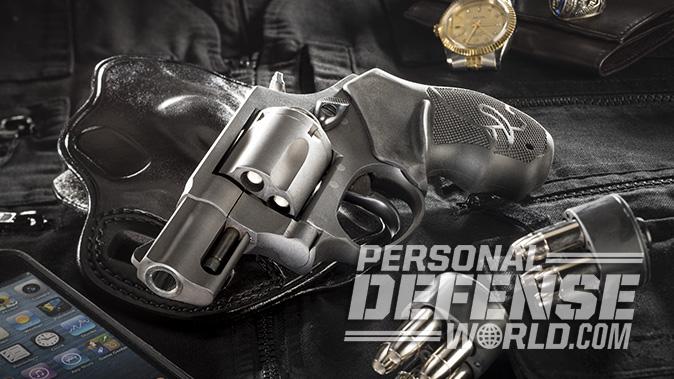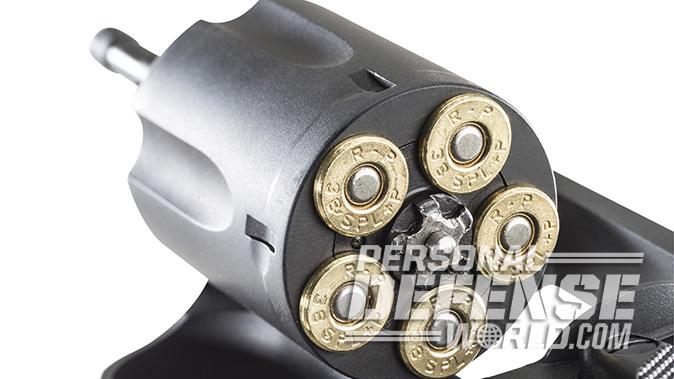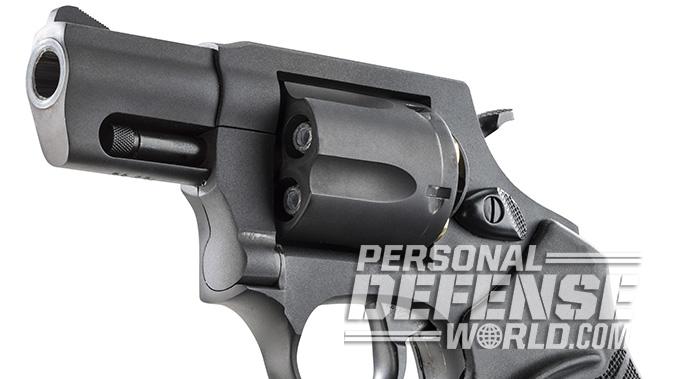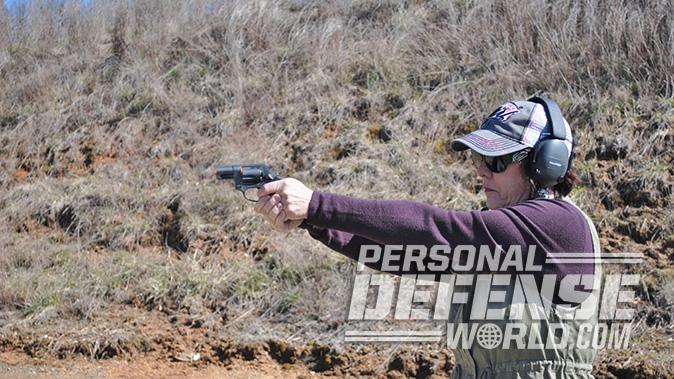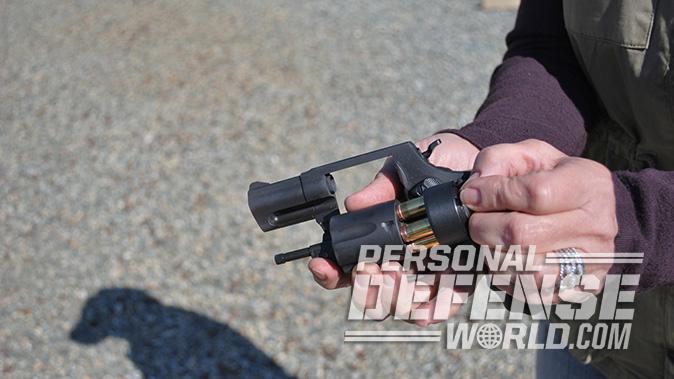I like revolvers. I bought my first handgun, a .22 revolver, more than three decades ago. My second was a .38 revolver, as was my third handgun. These were followed by a .357 Magnum wheelgun, which was the first handgun I ever took a deer with. Then I was bitten by the action pistol competition bug and bought a 1911 pistol, which was followed over the years by a large number of semi-auto handguns.
But my affection for revolvers has never diminished. As a matter of fact, just last month I did an inventory of my gun safes and found that they contained more revolvers than pistols. Hmm, I wonder how that happened? While semi-auto pistols get most of the ink in today’s firearms press, those companies that produce revolvers are still selling them at a steady pace. And the reasons for the wheelgun’s continuing popularity are not difficult to understand:
Advertisement — Continue Reading Below
Ergonomics and handling: When you find a handgun with handling qualities superior to those of a quality double-action revolver, let me know because I want it.
Simplicity of operation: The manual of arms is straightforward—lift the revolver, aim, pull the trigger. If it doesn’t go bang, all you need do is pull the trigger again.
Safety: When you’re done shooting, you don’t have to manipulate manual safeties or hammer-drop levers. Just take your finger out of the triggerguard and make it straight. Is it loaded? Open the cylinder. If you can see daylight through the chambers, it’s empty.
Advertisement — Continue Reading Below
Reliability: A revolver’s function is not influenced by variables in ammunition ballistics, bullet configuration, magazines, magazine feed lips, recoil and/or magazine springs or the shooter’s grip. It has 100-percent ammunition tolerance with the proper ammunition. As long as the shooter’s trigger finger functions, chances are their revolver will, too.
Taurus Stron
Taurus of Porto Alegre, Brazil, introduced its first revolver in 1941 and since then has gone on to the become the largest manufacturer of handguns in Latin America. The company entered the U.S. market in 1968. Due to its quality standards and affordable prices, its extensive product line has proven very popular.
In 1985, Taurus released the Model 85 revolver to the American market. Built on the company’s small frame, it was a five-shot, snub-nosed revolver designed for concealed carry by licensed civilians and as a backup or off-duty gun for police officers. It has been in production for decades and has sold in large numbers to police agencies, armies and civilian shooters around the world.
Advertisement — Continue Reading Below
Today, the Model 85 family includes blued steel, stainless steel and “Ultralite” variants constructed of aluminum and titanium, as well as those with steel lockwork components and those chambered for the .38 Special, .357 Magnum, 9mm and .380 ACP cartridges. Taurus International of Miami, Florida, recently sent me a variation of this snubbie to evaluate—the Model 85 Convertible.
Going For A Spin
At first glance, the Convertible looks like a regular Model 85, and it is—except for an interesting and unique feature. But more about that later. It is an all-stainless-steel gun with a practical matte black finish. It sports a 2-inch barrel with a full-length underlug that not only protects the ejector rod but also adds a bit of recoil-dampening weight up front to help reduce muzzle flip.
The stainless steel cylinder is locked into the frame by a spring-loaded center pin passing through and projecting out past the rear of the ejector rod, where it enters a recess in the recoil plate holding the cylinder in place, all while a spring-loaded stud on top of the cylinder crane engages a mortise in the frame. This provides additional locking strength. Pushing the thumb latch on the left side of the frame forward forces the center pin out of its locking recess in the recoil plate. This allows the cylinder to be swung out to the left. Pushing in the ejector rod then forces out a star-shaped extractor that extracts all the cartridge cases simultaneously.
Advertisement — Continue Reading Below
A feature I really like is that Model 85 revolvers have longer ejector rods than some of the small-frame revolvers of other manufacturers. When struck smartly, this extracts spent cases completely, allowing for fast reloading, especially if you are using speedloaders.
A Closer Look
The front sight blade is serrated to cut down on glare, while the rear is a square notch in the topstrap of the frame. These sights are easy to pick up and align, providing a more than adequate sight picture for the ranges this revolver is likely to be used. While basic, these sights cannot be knocked out of zero without massive structural damage to the revolver’s frame.
Like all Taurus wheelguns, the Convertible has a transfer bar ignition system. When the trigger is pulled through a complete stroke, a flat bar rises in front of the firing pin that the falling hammer strikes, driving the frame-mounted firing pin forward to ignite the cartridge. At all other times, the hammer rests on the frame and cannot impact the firing pin.
Advertisement — Continue Reading Below
Another feature is Taurus’ Security System, which immobilizes the hammer and trigger to prevent unauthorized firing. To activate it, you simply insert a key (two are provided) into the lock located on the rear of the hammer and rotate it clockwise until it clicks. To unlock, insert the key and rotate it counter-clockwise.
More Details
The Convertible I received had a stage-free double-action trigger stroke that broke with a little more than 9 pounds of pressure. It broke crisply at 4.5 pounds in single action. The finger-grooved rubber grips provide a firm purchase, even with perspiring or oily hands, and help significantly in the recoil-control department.
You’re still wondering what the “Convertible” in the revolver’s designation means, right? Well, the explanation is rather simple. The hammer spur can be removed, turning the revolver into a bobbed-hammer configuration for concealed carry.
Advertisement — Continue Reading Below
To do this, you merely grasp the hammer spur with your thumb and trigger finger, push it forward slightly, rotate it to the right and pull it out. This allows the revolver to be carried in a pocket, purse or under clothing, and drawn from concealment without the spur hanging up on the lining of the pocket or clothing. But for sighting it in with different loads or if the situation calls for engaging a target with precise shots, you reinstall the spur and cock the hammer for shooting in single-action mode.
Hammer Time
My wife, Becky, and I ran the Model 85 Convertible through its paces on a chilly February morning. The mandatory accuracy testing was conducted from an MTM K-Zone shooting rest at a distance of 15 yards. All four brands of ammo shot to the point of aim and produced some very respectable groups.
Advertisement — Continue Reading Below
Becky’s everyday-carry gun is a 2-inch, hammer-less snubbie that she carries in either a Galco crossdraw belt holster or one of the company’s Metropolitan holster handbags. Accordingly, she ran the Taurus through a series of off-hand drills on a combat target from the “real life” distance of 7 yards. Becky is an avid shooter. It did not surprise me in the least when she proceeded to perforate the target with consistency. This created a ragged hole in the 10 ring by the time she was done.
She commented that the revolver’s rubber grips provided excellent recoil control, which allowed her to make fast, accurate follow-up shots. Her only complaint was that the black-on-black sights were not to her liking, and she would prefer a red insert or a fiber optic in the front blade.
Taurus’ Model 85 Convertible revolver proved to be a fine-handling, reliable and accurate little wheelgun. We would not hesitate to recommend it to anyone who needs a handgun for concealed carry or home defense, and who prefers one that rotates rather than reciprocates.
Advertisement — Continue Reading Below
Taurus Model 85 Convertible Specs
| Caliber: .38 Special +P |
| Barrel: 2 inches |
| OA Length: 6.5 inches |
| Weight: 21.4 ounces (empty) |
| Grip: Rubber |
| Sights: Front blade, notch rear |
| Action: DA/SA |
| Finish: Matte black |
| Capacity: 5 |
| MSRP: $371 |
Taurus Model 85 Convertible Performance
| Load | Velocity | Accuracy |
|---|---|---|
| Federal American Eagle 130 FMJ | 772 | 1.80 |
| Hornady 90 FTX | 1,087 | 2.00 |
| HPR 158 JHP | 713 | 1.75 |
| Sig Sauer 125 V-Crown JHP +P | 904 | 1.50 |
*Bullet weight measured in grains, velocity measured in fps by chronograph and accuracy measured in inches for best five-shot groups at 15 yards.
For more information, visit taurususa.com.
This article was originally published in “Pocket Pistols” #186. To subscribe, visit outdoorgroupstore.com.

